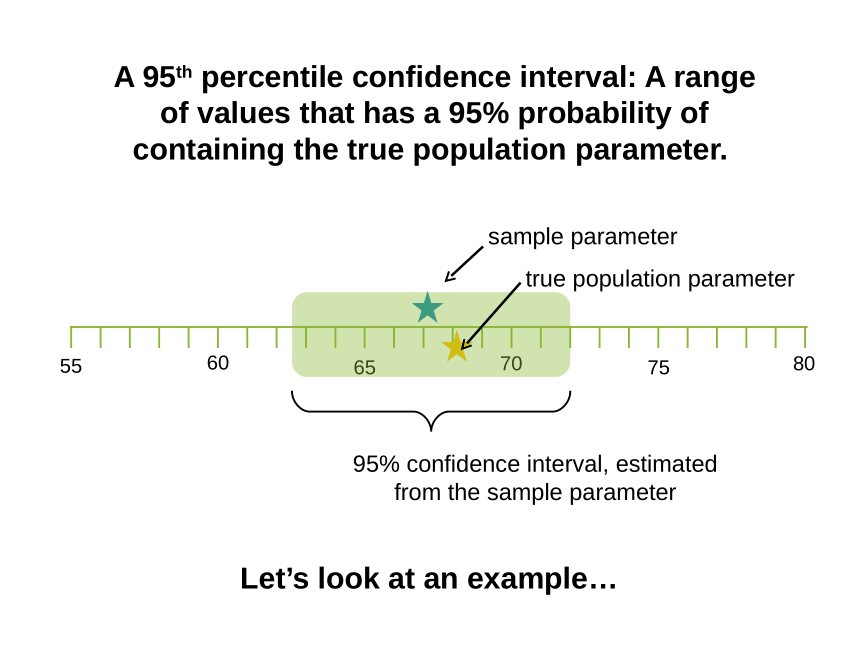
There was effect modification by treatment arm. Overall, ID or ferritin levels at first antenatal visit were not associated with birth outcomes. ResultsĪt first antenatal visit (median gestational age, 22 weeks), 1256 women (66.4%) had ID. Mediation analysis assessed the degree of mediation of ID-birth outcome relationships by malaria infection or haemoglobin levels. Associations of ID (defined as ferritin <15 μg/L) or ferritin levels with birth outcomes (birthweight, LBW, preterm birth, small-for-gestational-age birthweight ) were determined using linear or logistic regression analysis, as appropriate. Plasma ferritin levels measured at antenatal enrolment in a cohort of 1892 women were adjusted for concomitant inflammation using C-reactive protein and α-1-acid glycoprotein. We assessed the relationship between ID and adverse birth outcomes in women receiving SPAZ or SPCQ, and the mediating effects of malaria infection and haemoglobin levels during pregnancy.
#Confidence interval examples real life plus#
In Papua New Guinea (PNG), monthly treatment with sulphadoxine-pyrimethamine plus azithromycin (SPAZ) prevented low birthweight (LBW <2500 g) through a combination of anti-malarial and non-malarial effects when compared to a single treatment with SP plus chloroquine (SPCQ) at first antenatal visit.

#Confidence interval examples real life tv#
It indicates that "if the survey were to be repeated a large number of times, each time by randomly sampling the same number of individuals from the population, the average well being rating for people without a TV is expected to fall within the confidence interval 95% of the times".Iron deficiency (ID) has been associated with adverse pregnancy outcomes, maternal anaemia, and altered susceptibility to infection. The confidence interval seems to be calculated from a frequentist perspective, meaning that as you correctly state in your question, it refers to the data generating process (the survey). So $$ is the 95% confidence interval around the score reported by people without the TV. There it is indicated that respondents were asked to indicate their own well being on a scale from 0 to 10, where 10 represents "the best possible life for you" and 0 the worst. I had to go read the original Gallup survey results. Wellbeing among those without TVs is between 4.88 and 5.26.” TheĬonfidence interval here is “between 4.88 and 5.26“. For example, “For the Europeanĭata, one can say with 95% confidence that the true population for

Over, using the same techniques, 95% of the time the results wouldįall within the published results. Was 95% +/-3, which means that if Gallup repeated the poll over and The results from the poll stated that the confidence level I went to read the post, and I also found it a bit unclearĪ 2008 Gallup survey found that TV ownership may be good for wellbeing.

What does the confidence interval “between 4.88 and 5.26“ mean there? It does not make sense to say there 4.88 people don't have TV in their home. I don't really understand the part in the example of "2008 Gallup survey"įor the European data, one can say with 95% confidence that the true population for wellbeing among those without TVs is between 4.88 and 5.26.

Maybe 36,000,000 is people in poverty, maybe less a bit, maybe greater a bit, any number in the interval is as expected. "the number of people in poverty in the United States is 35,534,124 to 37,315,094" means (35,534,124 to 37,315,094) is the confidence interval.Īssume the Bureau repeats the survey 1,000 times, the confidence levels of 90% means that the stated number is between (35,534,124 to 37,315,094) at least 900 times. Census Bureau in that post, which routinely uses confidence levels of 90% in their surveys. I guess I clearly understand the example of the U.S. I guess I partly understand the main idea in it and have some A post explains "Confidence Intervals" in several real life examples.


 0 kommentar(er)
0 kommentar(er)
